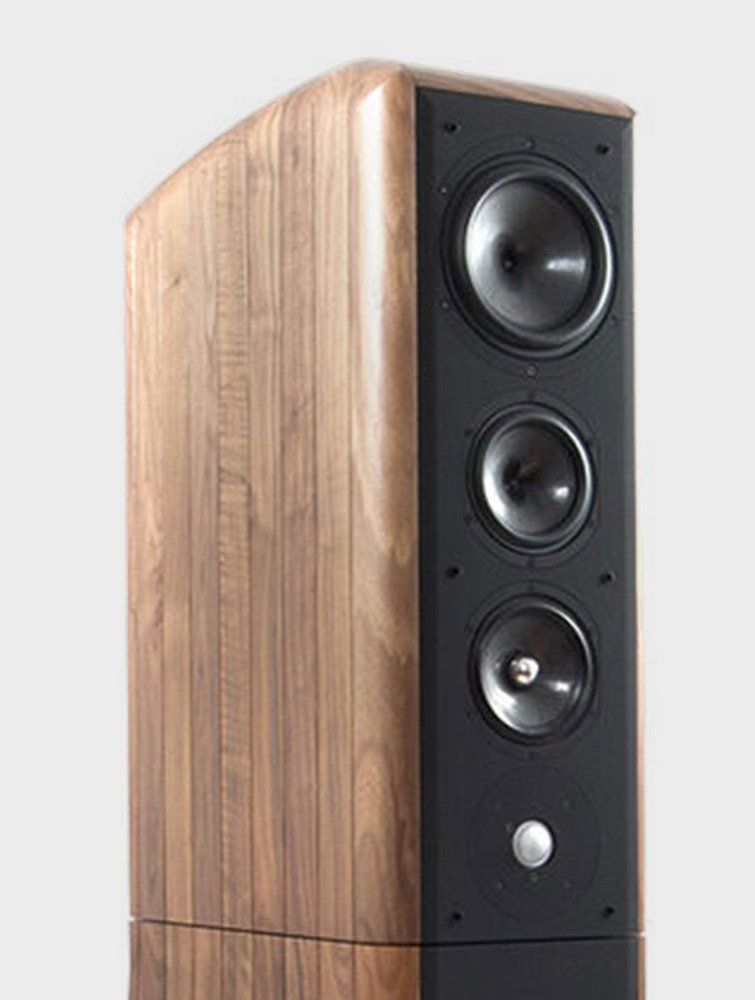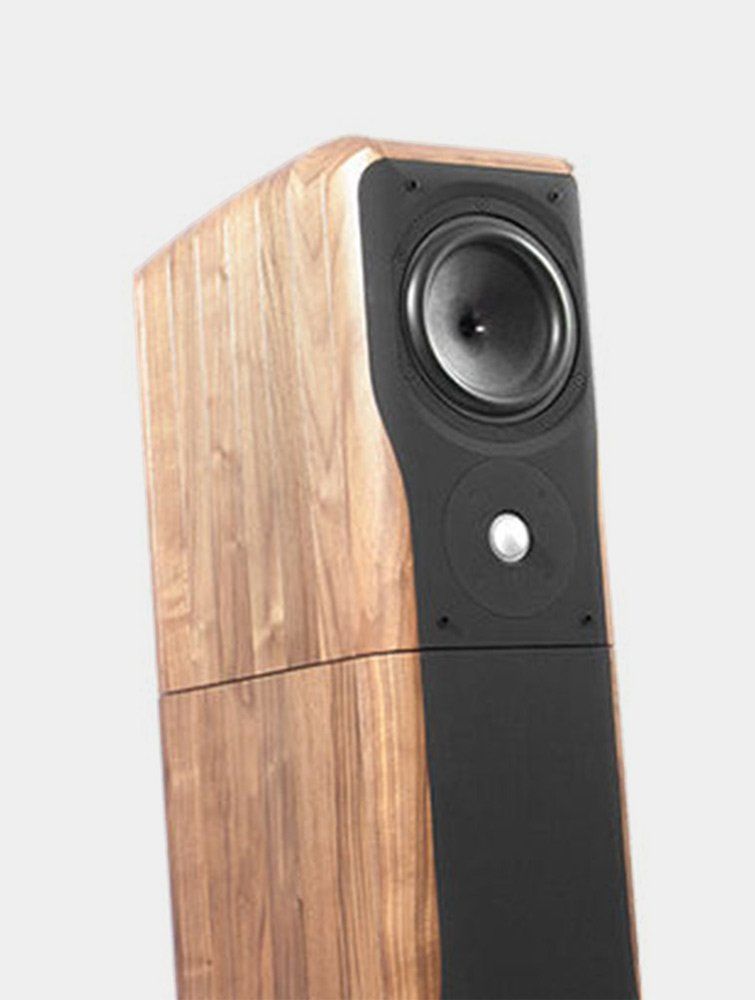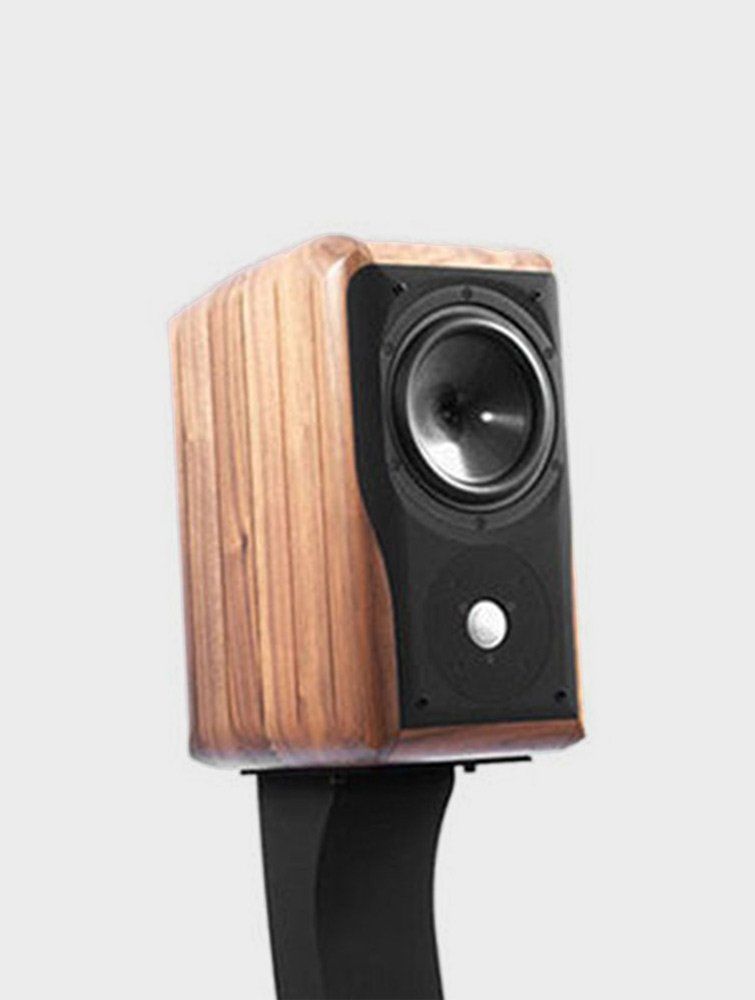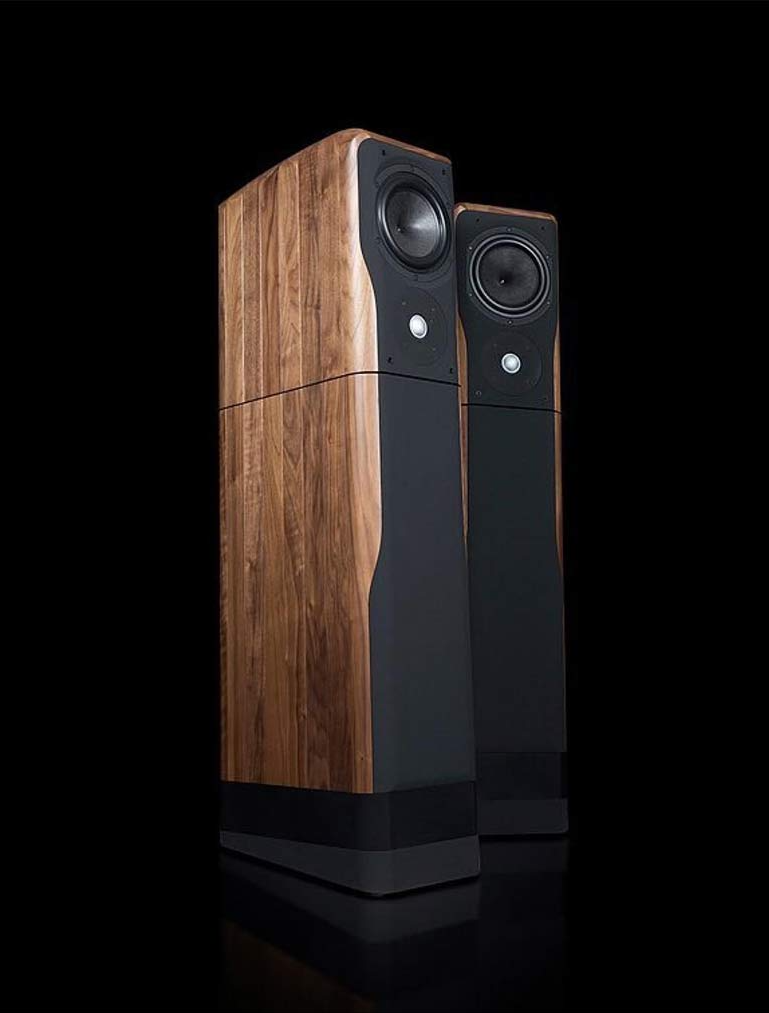
ACADEMY S SERIE
The acoustic calibration of a loudspeaker system is normally performed in bounce-free chambers designed for this specific purpose. The goal is to eliminate environmental interference, ensuring the precision of all measurements and tests. The geometry of a domestic setting, however, completely shapes a speaker’s response, thereby modifying the listening experience, sometimes dramatically. Since there are limitless speaker/room/furniture combinations, computer-aided simulation can only outline general performance parameters that are useful for assessing reproductive balance, but might not sufficiently account for the listening experience. Since any free-standing “tower” system has a fixed driver-to-floor distance, once the listening distance has been established, distortion caused by initial floor bounce can be calculated. This type of interference results in the loss or excess of energy within a frequency band, usually an octave wide; which generally resembles the central octave of a piano. In other words, the set of musical notes most recurrent in western compositions are diminished. By eliminating bouncing surfaces within a meter however, subsequent contact with the floor can be controlled by a specific arrangement of the crossover filter and vertical driver array. The correlation between the dips and peaks of octaves implies dramatic timbre alteration in the complex tone generated by the sound source, because floor bounce can translate to a difference of almost 10 dB between the fundamental frequency and the second harmonic
SENSORY PERCEPTION AND PSYCHOACOUSTIC
If the system’s frequency response is shaped to the loudness level curve for 45 on, it closely reproduces environmental information aligned with human ear sensitivity of 40-50 dB SPL levels.
The particularity of this solution is that it effectively addresses the paradox inherent in the loudspeaker system reproduction. During a concert in a closed venue, music reaches the human ear by two distinct sound fields. The first is direct and travels to the listener along the line-of-sight; the other is reverberated and comes from all surfaces of the venue. The reverberated field not only suffers delays because of multiple bounces, but also has no specific path, emanating from all directions. Hence, listening to a recording at home is incomparable to the live concert experience, as the direct field and the reverberated field come from the same point.
This disparity in experience causes the listener to activate a process of “directional listening”, where the listener adjusts by focusing on the sources of sound. At this point, because the environmental information is returned on a linear curve, the brain pays too much attention to the mid frequencies, collapsing the stereo image “between” the speakers.
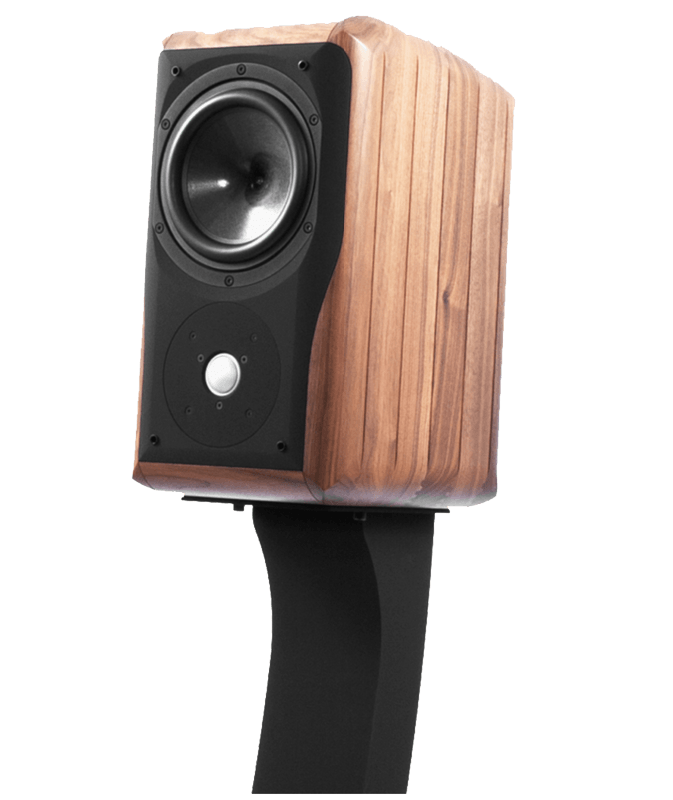
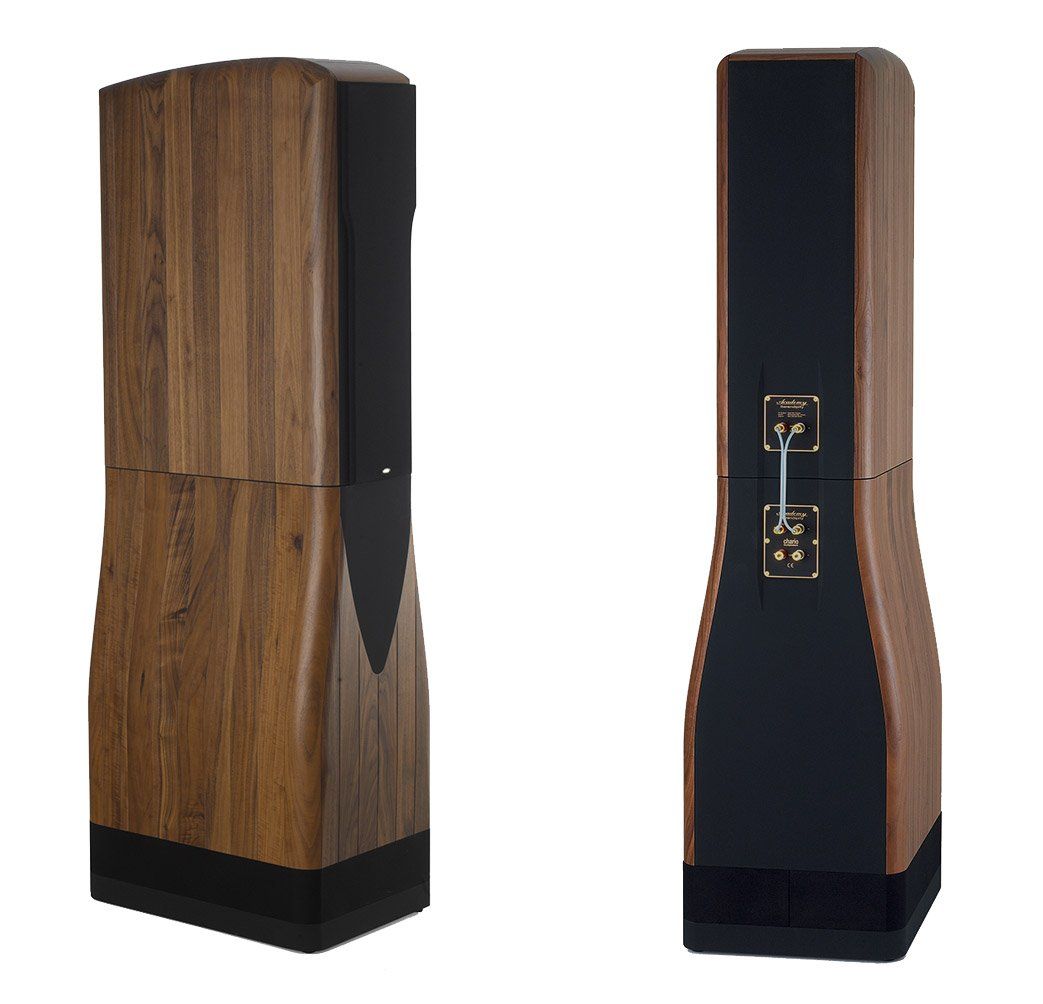
NATURE ON IT
TO BE REALIZED, ACADEMY SERIES MODELS TAKES FROM 150 UP 200 HOURS OF FINE ARTIGIANAL WORK
Our finishes are completely natural, and also the varnishes used are water-based and non-toxic. The production process ensures full environmental sustainability Using only materials from Italy, our attention to the treatment, processing, and final fit and finish creates a speaker cabinet of extraordinary rigidity and visual beauty. Our wood treatment alone requires six months, and six different production departments to ensure quality never falls short of perfection. Coupled with our proprietary driver technologies and arrangements, all Chario Loudspeakers are hand assembled in Italy, in Chario’s own production facilities.
Composite materials demonstrate isotropic behavior, dispersing energy in every direction within its fibers. Solid wood however, used in jointed slats with dovetail joints, is the best solution in attaining structural rigidity. Deploying natural wood panels of wood fiber coupled on orthogonal planes, allows us to utilize the best characteristics of both materials. The Serendipity endoskeleton has the task of damping the mechanical vibrations induced by the woofer, confining these within the cabinet.




